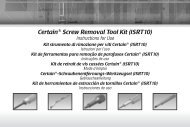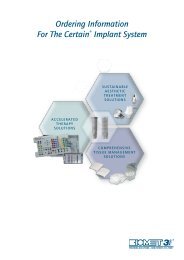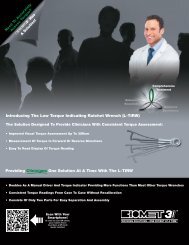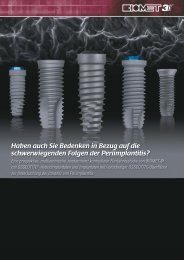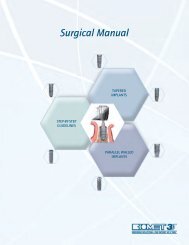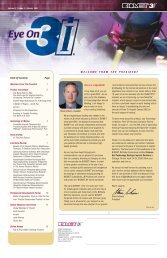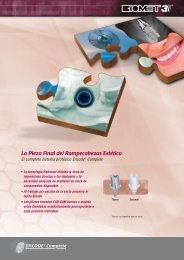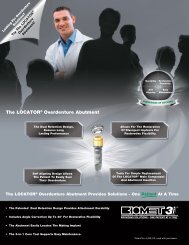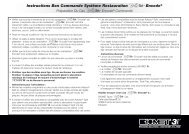Estudio de BIOMET 3i , prospectivo, multicéntrico, controlado
Estudio de BIOMET 3i , prospectivo, multicéntrico, controlado
Estudio de BIOMET 3i , prospectivo, multicéntrico, controlado
- No tags were found...
You also want an ePaper? Increase the reach of your titles
YUMPU automatically turns print PDFs into web optimized ePapers that Google loves.
organizations, SIM membership consists of over 3,000 IT lea<strong>de</strong>rs and The Conference Boardmembership consists of executives from over 2,000 companies. Membership in the twoorganizations may overlap, as some executives may belong to both.Measurement of ConstructsStrategic alignment maturity was assessed using the SAM assessment instrument.An earlier paper (Sledgianowski et al., 2006) empirically tested and validated the SAMassessment instrument using the same data set used in the current study. The instrumenti<strong>de</strong>ntified six factors (Communications, Competency/value, Governance, Partnership, Scope andArchitecture, and Skills, with five distinct Maturity levels, comprised of 22 items to measurestrategic alignment maturity.There are two components to the Knowing Objectives construct. One measures the<strong>de</strong>gree to which respon<strong>de</strong>nts know their business objectives, called Knows BusinessObjectives and the other one measures the <strong>de</strong>gree to which respon<strong>de</strong>nt know their ITobjectives, called Knows IT Objectives.DATA ANALYSISThe three <strong>de</strong>finitive IT objectives and the three <strong>de</strong>finitive business objectives were compared toeach respon<strong>de</strong>nt’s written objectives and the respon<strong>de</strong>nt was assigned a value of “knows” or“does not know” corresponding with whether they knew one or more of the <strong>de</strong>finitive objectives(knows) or whether they did not know any of the <strong>de</strong>finitive objectives (does not know). Forexample, looking at the IT objectives of one organization, their top three business objectives, asi<strong>de</strong>ntified by the most-senior respon<strong>de</strong>nt, a Vice-Presi<strong>de</strong>nt, for their firm were: (1) ProfitableGrowth, (2) Innovation, and (3) Highly qualified people. Each written business objectiveresponse of the respon<strong>de</strong>nts from that company were compared to these three <strong>de</strong>finitiveobjectives to <strong>de</strong>termine if none, one, two, or all three of their stated business objectives matchedthese <strong>de</strong>finitive objectives as <strong>de</strong>fined by the most-senior executive. All differences in scoresbetween the judges were reconciled, resulting in complete consensus.RESULTSDiscriminant function analyses using SPSS statistical software (1997) were performed to<strong>de</strong>termine whether the six factors i<strong>de</strong>ntified by the Strategic Alignment Maturity mo<strong>de</strong>l can beused to create discriminant equations to predict whether IT and business employees know theirfirm's IT and business objectives.The six factors (COMM, COMP, GOV, PART, SCOPE, SKILLS) were used as predictorvariables. The scores for each of the six factors were computed as the mean of the items makingup each factor. The six factors were entered into the analysis together, assuming equal priority ofthe factors.964



